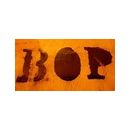J.S. Bach compuso un total de 12 piezas con el título "Toccata": 4 para órgano (BWV 538, 540, 564 y 565), 7 para teclado (BWV 910-916) y una para el movimiento de apertura de la partita 6 en Mi menor BWV 830.
Las 7 tocatas datan entre 1708 y 1710, algunas, posiblemente anteriores. Fueron compuestas por un joven Bach, interesado en explorar las posibilidades virtuosísticas al teclado.
El estilo de las tocatas para clavecín de Bach deriva de las tocatas para órgano y clave de los compositores italianos, austriacos y alemanes del siglo XVII. El género tiene sus orígenes en los arreglos para teclado de los trabajos vocales.
El estilo adoptado por Bach incluye varios elementos como la ejecución libre (ver prefacio de "Toccatas y Partitas" de Frescobaldi) y la escritura fugal.
Aquí hay un documento muy interesante para entender las tocatas y abordar su interpretación en un marco estilísticamente coherente con su origen:
Style and Interpretation in the Seven Keyboard Toccatas of J. S. Bach, BWV 910-916
IMSLP: BWV 910-916
Las 7 tocatas datan entre 1708 y 1710, algunas, posiblemente anteriores. Fueron compuestas por un joven Bach, interesado en explorar las posibilidades virtuosísticas al teclado.
El estilo de las tocatas para clavecín de Bach deriva de las tocatas para órgano y clave de los compositores italianos, austriacos y alemanes del siglo XVII. El género tiene sus orígenes en los arreglos para teclado de los trabajos vocales.
El estilo adoptado por Bach incluye varios elementos como la ejecución libre (ver prefacio de "Toccatas y Partitas" de Frescobaldi) y la escritura fugal.
Aquí hay un documento muy interesante para entender las tocatas y abordar su interpretación en un marco estilísticamente coherente con su origen:
Style and Interpretation in the Seven Keyboard Toccatas of J. S. Bach, BWV 910-916
Alguien escribió:The keyboard toccatas of J. S. Bach, BWV 910-916, present a formidable challenge of interpretation to the modern-day performer. These works contain some of the most unusual compositional techniques to be found in Bach’s output due to their use of an improvisatory, virtuosic style inherited from the seventeenth century. While pianists of today are trained to perform with perfect fidelity to the score, the treatises from the time of Bach point to a rhythmically free approach to the improvisatory features of these toccatas. The goal of this treatise is to explore how the historical tradition from which Bach’s toccatas emerged influenced their stylistic characteristics with the purpose of applying this information to create an informed performance by today’s interpreters.
Table of Contents
List of Figures .......................................................................................................xii
Introduction ......................................................................................................................1
Chapter 1: Defining the Toccata as a Genre ..........................................................4
Defining the term “Toccata” ......................................................................4
Instrumental Implications ......................................................................9
Purpose ............................................................................................13
Compositional Style ................................................................................17
Similar Genres ................................................................................21
Chapter 2: The Toccata's Journey from Italy to J. S. Bach ................................27
Italy ........................................................................................................27
Southern Germany ................................................................................39
The Netherlands and the Early North German Organ School ........42
The Later North German Organ School ............................................47
Germany of J. S. Bach’s Early Career ............................................53
Chapter 3: The Stylus Phantasticus in the Toccatas, BWV 910-916 ....................58
Baroque Concepts of Style ....................................................................59
Defining the Term “Stylus Phantasticus” ............................................61
Stylus Phantasticus Influences in J. S. Bach’s Keyboard Toccatas ........69
Chapter 4: Towards a Historically Informed Performance of the Toccatas ........86
Frescobaldi’s Preface ................................................................................89
Stylus Phantasticus Definitions ........................................................93
C. P. E. Bach and J. J. Quantz ........................................................97
Current Scholarship ..............................................................................103
Chapter 5: A Twenty-First-Century Perspective on Performance of J. S. Bach’s
Toccatas ..................................................................................................................112
Validity of Bach’s Keyboard Toccatas on the Piano ..............................114
Transferring Bach to the Piano ......................................................117
Twenty-First Century Recordings of the Toccatas, BWV 910-916 ......125
Conclusion ..................................................................................................................137
Bibliography ..................................................................................................................140
IMSLP: BWV 910-916





![{] ∞Ω∞ [}™](https://users.soniccdn.com/images/130/67110_cmf0z.jpg)






